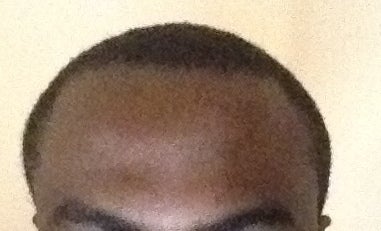
It can also be frustrating to not know if your hair is going to grow back or fall out again.Ĭonsider joining a patient support group for people who have alopecia areata. It affects social interaction and self-confidence, as people are embarrassed to let others see their hair loss. The American Academy of Family Physicians (AAFP) recognizes that living with alopecia areata can be emotionally difficult. No matter what therapy you try, hair loss usually returns when you stop treatment. Contact immunotherapy does have side effects, including a severe rash and swollen lymph nodes in your neck.

It could take as long as three months to see hair growth if this treatment works. With this treatment, the medicine that is applied to your scalp irritates your skin, making it red and scaly.

It purposely causes an allergic reaction on your scalp that could trigger hair growth.

Other treatments include hair growth medicines that contain steroids that you apply to your skin.Ĭontact immunotherapy is another treatment. Your doctor may not prescribe treatment in those cases.įor larger areas of hair loss, your doctor may prescribe steroid injections under your scalp. If you have a few, small patches of hair loss on your head, it’s likely your hair will grow back within a few months. It is rare for a parent to pass the condition onto a child. Other immune system diseases include type 1 diabetes, rheumatoid arthritis, thyroid disease, lupus, Addison’s disease, and atopic dermatitis. Having a family member with alopecia areata and another immune system disease can raise your risk of having it. Some people have a family history of alopecia areata. Alopecia areata is not tied to stress, as some people believe. The cause is unknown and varies by person. The condition cannot be prevented or avoided. Prevention Can alopecia areata be prevented or avoided? You may also have a blood test to look for other autoimmune diseases. This can help them rule out other conditions that cause hair loss.
#DENT IN THE MIDDLE OF MY FOREHEAD SKIN#
They will scrape a small sample of skin from your scalp and look at it under a microscope. If your doctor can’t confirm a diagnosis, he may send you to a lab for a test. Your doctor may pull a couple of hairs from your head to examine under a microscope. Sometimes, the remaining hair in alopecia areata has a specific shape. They will check to see if the hairless areas of your scalp are smooth and peach-colored. He or she will review your medical history. Your doctor will look at your hair loss pattern. See your doctor if you are experiencing significant hair loss. Diagnosis How is alopecia areata diagnosed? In that case, they believe a virus or something in your environment may trigger the disease. Scientists think the cause of the disease may be related to a person’s genes. This means your immune system attacks part of your body by mistake. There is no known cause for alopecia areata. Nails can have tiny dents (pitting), have white spots or lines, and be rough. Some people with alopecia areata see changes in their fingernails and toenails. Rarely, people who have alopecia may feel burning or itching in the areas where they once had hair. This includes eyebrows, eyelashes, arms, legs, underarms, pubic, and chest and back hair for men. In its worst form, alopecia universalis causes you to lose all body hair. The condition is unpredictable, and the cycle of hair loss and regrowth can repeat itself.Īlopecia areata can grow into another form of alopecia. A mild case of alopecia areata starts with one to two coin-size hairless patches. This leaves smooth, peach-colored areas of scalp exposed. The main symptom of alopecia areata is hair loss that occurs in small, round patches on your head. Telogen effluvian is more common and usually, your hair does grow back after this type of hair loss. However, it is more common in children and adults in their early 20s.Īlopecia is different than telogen effluvian, which is hair loss that can be caused by physical stress such as rapid weight loss or pregnancy.

This causes some or all of your hair to fall out. With this condition, your body mistakenly views your hair follicles as an enemy. It’s a non-life-threatening disease of your immune system that affects the hair on your scalp. Alopecia areata is a form of alopecia (hair loss).


 0 kommentar(er)
0 kommentar(er)
